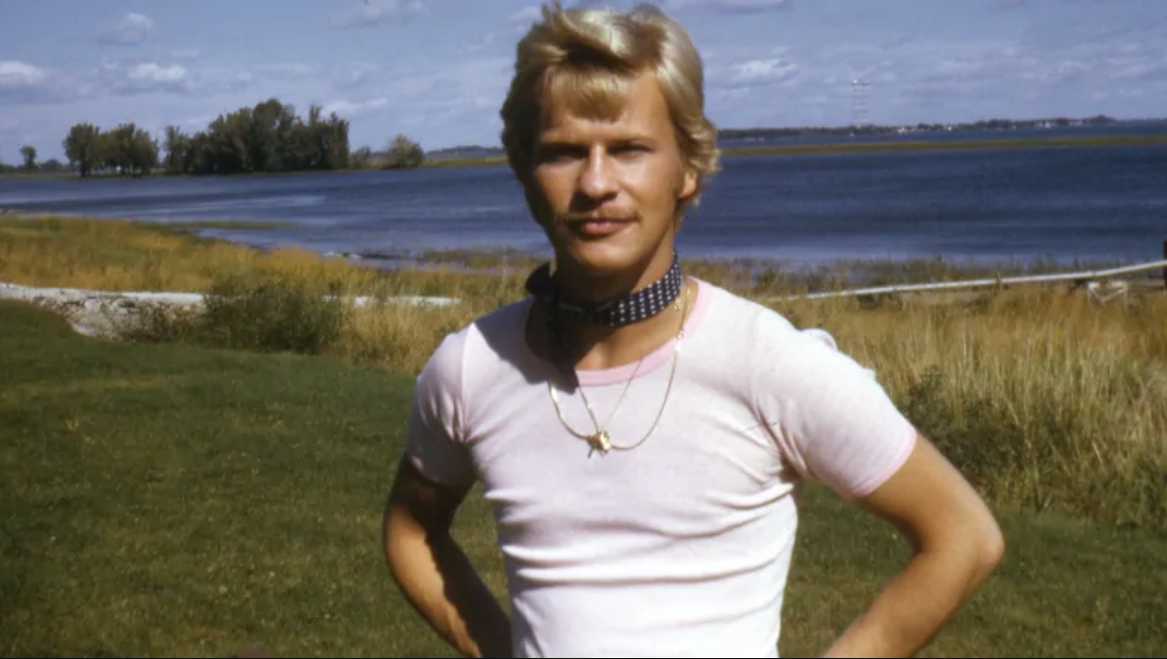This is the fourth piece in The Daily’s Frameline44 coverage. This piece covers select documentary films from the festival. Due to film embargos, some of The Daily’s coverage will be released upon a film’s respective digital or cinematic release.
“Ahead of the Curve” (2020, Jen Rainin and Rivkah Beth Medow)
Jen Rainin and Rivkah Beth Medow’s documentary “Ahead of the Curve” presents a fascinating, in-depth look at the complex history of Curve, a lesbian media outlet. Founded by Franco Stevens in 1990 and originally named Deneuve (whose name also has an amusing past with no clear origin, as the film highlights), Curve — or Curve Magazine, as it was named — was known for championing women from all walks of life and became the go-to lesbian magazine. Describing a work that started from a mere seed of a magazine to its iteration today, “Ahead of the Curve” is a quick yet unparalleled look into the history of this storied magazine, richly supplemented by archival photos and video footage.
The magazine bizarrely faced a lawsuit from French actress Catherine Deneuve, who didn’t want her last name associated with a queer magazine, which forced the magazine to change its name to Curve Magazine. But this was also evidence that the magazine had grown extraordinarily large — large enough for a world-class actress to know it. The sheer capacity of those creating Curve was astounding — how Stevens and those at the magazine traveled around the United States to huge crowds, themselves becoming household names in the queer community. Curve was a magazine that provided America’s lesbian community with an outlet for self-expression, something they could enjoy, treasure or otherwise share with other queer folks amid homophobia in their own lives.
The complex history of Curve is just as interesting as the closeness of the queer women who created this magazine; they became Curve Magazine itself. As Curve grew bigger, the magazine featured a lot of big-name queer women and queer allies (and queer icons!), something that Stevens admitted was surprising and still unbelievable. (Some big names on the cover throughout the history of the magazine include Wanda Sykes, Margaret Cho, Jane Lynch, Tegan and Sara, Kristen Stewart, Melissa Etheridge, Cate Blanchett and Ellen Page.) The documentary also takes a dive into the present, where the magazine is now online-only, but has a legacy that persists. Stevens sold the magazine and the new editors began to change what Curve looked like, going from more of a colorful free-style format to a sleek cover reminiscent of Vogue. Facing low print sales, Curve was at risk for shutting down entirely — but it survived, and “Ahead of the Curve” rightfully celebrates this.
“Keyboard Fantasies: The Beverly Glenn-Copeland Story” (2019, Posy Dixon)

(As you read, I recommend that you listen to Beverly Glenn-Copeland’s eponymous 1986 album, “Keyboard Fantasies,” which you can find on Spotify here.)
“Keyboard Fantasies” is a glimpse into the life of legendary musician, multi-instrumentalist, vocalist and cross-genre genius Beverly Glenn-Copeland — or Glenn, as his friends and bandmates address him. Primarily narrated by Glenn himself, “Keyboard Fantasies” briefly explores his childhood as he was encouraged to pursue music before going off to college at McGill University in Canada. Attending McGill beginning in 1961, Glenn was able to explore his sexuality while also standing out through another dimension as one of the very first Black students to attend the university. Glenn himself addresses how his own identity changed over the years, shifting from self-identifying as a lesbian to a trans man today.
The film takes a two-pronged approach by telling the unique and relatively unknown history of the electronic “Keyboard Fantasies” album while also following several of Glenn’s tour performances. “Keyboard Fantasies” became a sleeper hit after being found by a Japanese collector, and Glenn hastened to send all his remaining album copies to the collector. Coupled with this historical narrative comes the story of his bandmates, a devoted touring group of incredible student musicians who all adore and admire him — as a musician, as a trans man and as a friend.
“Keyboard Fantasies” really deserves more depth and, frankly, a longer run time. But for as much heartwarming and calming content as it gives, “Keyboard Fantasies” is a beautiful look at a musician and trans icon who goes nearly unrecognized outside of more niche musical circles, having never sought to become a huge name. Even if you’re not one to put the melodious tones of “Keyboard Fantasies” on repeat, the film is sure to spark a little artistic inspiration in you.
“Killing Patient Zero” (2019, Laurie Lynd)

“Killing Patient Zero” outlines the history of the term “patient zero” as it applies to the AIDS crisis — which became synonymous with one person: Gaëtan Dugas, an Air Canada flight attendant. For viewers unfamiliar with this history, “Killing Patient Zero” is a nuanced and relatively comprehensive look at the media’s vilification of Dugas, even as he cooperated with Centers for Disease Control and Prevention (CDC) investigators and fought against a complete lambasting of his own queerness as the “cause” of the AIDS epidemic in the United States.
Although the film is heavy on talking heads, it’s nonetheless filled with discussions from people close to Dugas and those who experienced firsthand the emergence of the AIDS crisis. “Killing Patient Zero” balances an empathetic look at Dugas and his wild, joyous and literally high-flying sexual life as a gay man in the 1970s with the darker history of how the public came to be aware of AIDS and the Reagan administration’s complete and absolute ignorance of it. Through a close tracing of the emergence of cases as they appeared via AIDS symptoms, particularly Kaposi’s sarcoma, “Killing Patient Zero” unearths the fallacy built around the idea of “patient zero” — how it was misread and then perpetuated, reinforcing homophobic standards amongst the general public. The medical professionals who created the study labeled Dugas as the “Out of California Case,” or “patient O,” which was read as “patient 0” (i.e., zero) leading to its synonymization with the first case, even though this was very clearly debunked years later.
In “Killing Patient Zero,” viewers are able to slowly but surely descend into this complex network of misunderstandings and come to see how this well-intended medical study led everyone to villainize Dugas to such an extent that his family still refuses to speak to the press. “Killing Patient Zero” effectively illustrates the combination of a fundamental medical misunderstanding of HIV — that the HIV incubation period is on the scale of years to decades, not months — coupled with journalists and the medical community effectively working against each other instead of together in the face of what was ultimately a complete governmental failure.
But who is really to blame, if anyone in particular? The film leaves that for viewers to decide. By including testimonies from Dugas’ friends and former partners, medical professionals involved in the original study and the journalist who revealed Dugas’ name to the wider world (himself a gay man who also eventually died of AIDS), “Killing Patient Zero” parses through an extraordinarily complex history with wide-ranging impacts today. The rise of the term “patient zero” has become something of a sociopolitically charged term — the victim of blame, despite its medical meaning as an “index case” (often defined as the first documented case) rather than the original case — especially in pandemic times like these.
Contact Olivia Popp at oliviapopp ‘at’ stanford.edu.
